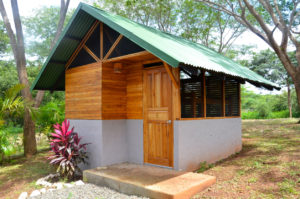 One of the methods that single-family rental home investors use to maximize their earning potential is to add units, specifically tiny homes, to an existing property. The tiny house movement began with individuals looking to better their lives by reducing their possessions and downsizing their living space. This movement has grown into a legitimate investment opportunity. But just because it’s gaining ground, it doesn’t mean that all investors ought to join in. A tiny home may not be a good— or even legal— option right now. So, don’t rush to the decision to build a tiny home in Miami. First, learn as much as you can about the movement, including the opportunities and the potential problems as well.
One of the methods that single-family rental home investors use to maximize their earning potential is to add units, specifically tiny homes, to an existing property. The tiny house movement began with individuals looking to better their lives by reducing their possessions and downsizing their living space. This movement has grown into a legitimate investment opportunity. But just because it’s gaining ground, it doesn’t mean that all investors ought to join in. A tiny home may not be a good— or even legal— option right now. So, don’t rush to the decision to build a tiny home in Miami. First, learn as much as you can about the movement, including the opportunities and the potential problems as well.
There’s no question that projects that increase your rental income while adding to the value to the property are worth studying. And the first impression about adding a tiny home to your rental property is that it’s a good way to achieve both. So, before we can speak in detail about it, we need to define it. What is a tiny home? The generally accepted definition is that a tiny home is a detached dwelling with an area under 400 square feet. They can be on wheels, similar to an RV, or built on a permanent foundation.
The high housing prices across the country is the main reason why a lot of people are looking for affordable rental homes. There is also a growing interest in a lifestyle of fewer possessions and a smaller environmental impact. When you put these two things together— the high housing prices and the downsized lifestyle— you can see why tiny rental homes are one housing trend that renters in many markets may welcome. When you construct a tiny home next to an existing rental house, your investors get to increase their rental income without having to deal with the costs of buying another property. And in a lot of cases, adding structures to the property will increase the property’s appeal to renters needing multiple units as well as add to the property’s overall value.
There are some things you still have to consider before deciding to add a tiny home to your rental property, however. The consideration you should look at first is cost. It may be a tiny building, but tiny homes still cost anywhere from $30,000 to $180,000. This indicates that no matter how economical or inexpensive a tiny home can be, it will still be a large financial investment. To make things even more difficult, it’s not really easy to get financing for a tiny home. Many lenders do not offer mortgages for tiny homes, and other types of loans would require you to pay it off at a much higher interest rate.
Other than the cost of building a tiny home, you’ll want to take the local zoning regulations and building codes into consideration. In many cities across the country, there are strict zoning laws that prevent property owners from adding rental units to a single-family property. Some even have regulations that mandate how big a detached dwelling must be in order to be legally occupied.
Local governments can also be very strict about building codes. Many require that all dwellings be built on foundations and that even tiny homes should have the same requirements as any other house. There could be permits, inspections, and utility service work required, all adding to the cost of construction. Therefore, doing thorough research on city ordinances and building codes in your area is an absolute necessity.
It is additionally significant to take into account how your tenants feel about a tiny home. If ever you have long-term tenants in your rental home, they may be neither glad nor eager about a second dwelling on the property. Adding another unit adds people, cars, and increased activity around the home. It could also give rise to disputes or several nuisances. Even though such a result may not happen, you must take measures to understand your current tenant’s needs before making your final choice.
Finally, although tiny homes add value to an investment property, they don’t appreciate the way we would want them to. It’s quite different from how traditional houses appreciate. Particularly for tiny homes on wheels, these are deemed depreciating assets and won’t grow in value at the same rate that the land and other structures might. Tiny homes built on foundations tend to fare better on resale value but may still lag behind traditional homes.
With all these reasons in front of you, deciding to add a tiny home to your investment property should not be taken lightly. It’s a good idea to know a lot beforehand. This will prepare you for success no matter what decision you make. Should you move forward with these plans in mind, don’t forget to make full use of the highly valued experience and services of a Miami property manager. Give us a call at 305-501-1511 to speak to a qualified representative.
We are pledged to the letter and spirit of U.S. policy for the achievement of equal housing opportunity throughout the Nation. See Equal Housing Opportunity Statement for more information.


